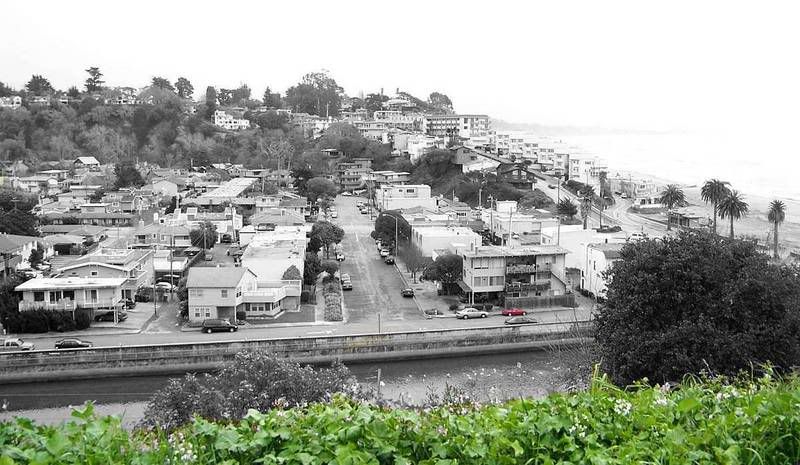Well, as if we did not have enough to worry about already. Global warming, Ice Ages, Terrorists, Food supplies, Clean water, Health Care, Politicians saying: "We just want to help you." Now this, a defective Y chromosone. Fellows, we were planned with obsolescence. Is this proof of Intelligent Design? If so, we need to talk to Her about it right now. I hope you will miss us, just a little bit. Don't cry for us Argentina. --John--

ENVISIONING A WORLD WITHOUT MEN
The Y chromosome is deteriorating
By NICK WATT
LONDON, April 28, 2008
Imagine a world without men: Lauren Bacall but no Bogie, Hillary Clinton but no Bill, no Starsky or Hutch.
This isn't just an unlikely sci-fi scenario. This could be reality, according to Bryan Sykes, an eminent professor of genetics at Oxford University and author of "Adam's Curse: A Future Without Men."

"The Y chromosome is deteriorating and will, in my belief, disappear," Sykes told me. A world-renowned authority on genetic material, Sykes is called upon to investigate DNA evidence from crime scenes. His team of researchers is currently compiling a DNA family tree for our species
Y Chromosome 'Fatally Flawed'
The Y chromosome is passed from father to son, it's what makes babies into boys. Basically the human template is a female: the Y chromosome kicks in a few weeks after conception and makes a boy. "Men are genetically modified women," explained Sykes. But unlike other chromosomes, the Y chromosome can't repair itself and will, says Sykes, disappear altogether in about 125,000 years.
"Every generation one percent of men will have a mutation which reduces their fertility by 10 percent," explained Sykes. Unlike most chromosomes, the Y does not travel through the generation in pairs, so can never repair itself from a mirror. Flaws are never repaired. "So if that goes on for generation after generation," Sykes argued, "eventually there are no functioning Y chromosomes left."
So no more men … sparsely populated sports bars, Ferrari would lose the lion's share of its business, and Hooters would probably go out of business.
It's a long time, 125,000 years. But we men have a far more immediate problem: sperm counts have fallen by an incredible 20 percent in the past 50 years. Stress? Alcohol? Environmental pollution? Who knows, but it's deeply concerning for those of us with a vested interest in the survival of the male.
Sykes has received hate mail. "To seem to be saying that men will become extinct, which is what I am saying," he mused. "I've had all kinds of messages from male groups saying, 'how can you betray your gender?'"

But would the absence of men make the world a better place? There would be far fewer wars without men on the planet, and the U.S. prison population would drop a colossal 97 percent. Road deaths in the U.S. would fall 70 percent. The Olympics would be half as long, which some people might view as a good thing.
Female-Only Reproduction
But surely, flawed Y chromosome or not, bad behavior or not, we are needed for procreation. Women can't have babies without us … right? I'm afraid, pretty soon they won't need our sperm, our chromosomes, our anything.

Until now, female-only reproduction has been limited to the plant and animal kingdom. So-called parthenogenesis, observed in the Cape Honey Bee, the Kimono Dragon and the hammerhead shark. In humans: confined to 1950s B movies. But Sykes says the technology for women to procreate without us is just around the corner.
"Within the next few years you will get two women having a child who is the biological child of both of them," Sykes said. "And entirely normal in every respect, but always female." They've already done it with mice. Two mothers: the genetic material from one used to fertilize the egg of the other.
Two Mommies
The picture that Professor Sykes is painting is of a nuclear family without a man in sight. We went in search of what could be the template for the survival of our species. Laura and Natalie are a lovely couple who live in South London with their 13-month-old daughter Sanne. They agreed to let our all-male crew take a peek into their lives. Natalie actually gave birth to Sanne. The sperm came from an anonymous donor. She's raised by two moms.
"That the child will be well balanced with just two moms: Well, that's been proven back in the 40s," explained Natalie, who is also a child psychologist. "It's the care giving and the relationship between the care-giver and the infant that is the important part."
Laura, who right now is the bread winner, thinks any family will work as long as the child is, "getting the attention, the affection, the discipline." Looking at her very contented daughter, Laura told me, "She's obviously confident. She's very stable and secure. So I think so far we're doing okay."
Laura attended both the dads' and the moms' prenatal classes. I asked Natalie if having Laura as the partner was better than having a man? "I had actually a couple of mothers saying, 'Well, at least Laura's a woman she will understand better.'" Natalie told me. "And I said, 'no.' … She was exactly the same as the dads!"
Could Laura mount a defense? "I would like to think that I separate from the dads in that I'm not hooked on the ball games and things like that," she explained. And I must say, she was knee-deep in diaper changing and feeding time while we were hanging out.
So judging by this family, two moms aren't necessarily better, but can be just as good. But surely they must need a burly man for some things? I offered to put up some shelves, or change some light bulbs. "Actually, Laura is very, very handy," Natalie told me, trying not to hurt my feelings.
"My father's a mechanic, so there's nothing about a car that disturbs me," explained Laura. "I've also … I renovated a house. So, I'm really not concerned about that either."
Maybe our only hope as men is that women decide to keep us alive for their own amusement. For the pop music, perhaps, or maybe the dancing. We can be good at that.

Then again, they might keep a few of us around to just get even with (john)




 This is a pine forest that has been completely covered over in Kudzu, That is a house is the very center.
This is a pine forest that has been completely covered over in Kudzu, That is a house is the very center.  Kudzu covers an old factory in Rockingham, N.C., in this 1999 file photo. (Chuck Burton/Associated Press)
Kudzu covers an old factory in Rockingham, N.C., in this 1999 file photo. (Chuck Burton/Associated Press) 











 by Belle Rustique Jewelry
by Belle Rustique Jewelry 


 Electrons are fired into a linac, or straight accelerator. They're boosted in a small ring before entering the storage ring. The superfast particles are corralled by a train of magnets. Energy lost by turning electrons emerges as intense light (X-rays).
Electrons are fired into a linac, or straight accelerator. They're boosted in a small ring before entering the storage ring. The superfast particles are corralled by a train of magnets. Energy lost by turning electrons emerges as intense light (X-rays).


